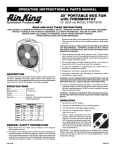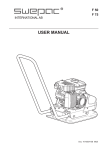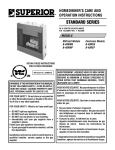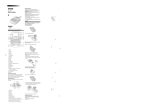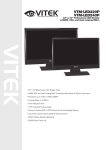Download Lennox Hearth SEREFINA CI1500DVF User's Manual
Transcript
HOMEOWNERS CARE AND OPERATION INSTRUCTIONS FREESTANDING VENTED GAS FIRED ROOM HEATERS Model CI1500DVF Series Report No. 116-S-08-5 Model CI2500DVF Series Serefina Series Direct Vent Gas Stoves P/N 775,148M Rev. B, 11/04 WARNING: IF THE INFORMATION IN THIS MANUAL IS NOT FOLLOWED EXACTLY, A FIRE OR EXPLOSION MAY RESULT CAUSING PROPERTY DAMAGE, PERSONAL INJURY OR LOSS OF LIFE. FOR YOUR SAFETY: Do not store or use gasoline or other flammable vapors or liquids in the vicinity of this or any other appliance. FOR YOUR SAFETY: What to do if you smell gas: • • • • DO NOT light any appliance. DO NOT touch any electrical switches. Do not use any phone in your building. Immediately call your gas supplier from a neighbor’s phone. Follow your gas suppliers instructions. • If your gas supplier cannot be reached, call the fire department. Installation and service must be performed by a qualified installer, service agency or the gas supplier. AVERTISSEMENT: ASSUREZ-VOUS DE BIEN SUIVRE LES INSTRUCTIONS DONNÉ DANS CETTE NOTICE POUR RÉDUIRE AU MINIMUM LE RISQUE D’INCENDIE OU POUR ÉVITER TOUT DOMMAGE MATÉRIEL, TOUTE BLESSURE OU LA MORT. POUR VOTRE SÉCURITÉ: Ne pas entreposer ni utiliser d’essence ni d’autre vapeurs ou liquides inflammables dans le voisinage de cet appareil ou de tout autre appareil. POUR VOTRE SÉCURITÉ: Que faire si vous sentez une odeur de gaz: • Ne pas tenter d’allumer d’appareil. • Ne touchez à aucun interrupteur. Ne pas vous servir des téléphones se trouvant dans le batiment où vous vous trouvez. • Evacuez la piéce, le bâtiment ou la zone. • Appelez immédiatement votre fournisseur de gaz depuis un voisin. Suivez les instructions du fournisseur. • Si vous ne pouvez rejoindre le fournisseur de gaz, appelez le service dos incendies. L’installation et service doit être exécuté par un qualifié installeur, agence de service ou le fournisseur de gaz. CONGRATULATIONS ON THE PURCHASE OF YOUR NEW GAS APPLIANCE MANUFACTURED BY LENNOX HEARTH PRODUCTS. When you purchased your new gas fired heater, you joined the ranks of thousands of concerned individuals whose answer to their home heating needs reflects their concern for aesthetics, efficiency and our environment. We extend our continued support to help you achieve the maximum benefit and enjoyment available from your new gas fired heater. It is our goal at Lennox Hearth Products to provide you, our valued customer, with an appliance that will ensure you years of trouble free warmth and pleasure. Thank you for selecting a Lennox Hearth Products gas fired heater as the answer to your home heating needs. Sincerely, All of us at Lennox Hearth Products TABLE OF CONTENTS Introduction ......................................page 2 General Information ..........................page 2 Operation/Care of Your Appliance .....page 3 Control Compartment Access ...........page 3 Variable Flame Adjustment................page 4 Burn-In Period ..................................page 4 Maintenance......................................page 4 Glass Cleaning ..................................page 4 Maintenance Schedule ......................page 5 Front Glass Enclosure Panel, Removal and Installation .................page 6 Burner Adjustments ..........................page 6 Flame Appearance and Sooting .........page 6 Adjustment........................................page 7 Log Placement ..................................page 8 Rockwool Placement.........................page 9 Millivolt Appliance Checkout .............page 9 Wiring Diagrams ...............................page 10 Warranty Information ........................page 10 These millivolt appliances are designed to operate on either natural or propane gas. A millivolt gas control valve with piezo ignition system provides safe, efficient operation. External electrical power is required to operate the optional electrically powered components if installed. These appliances comply with National Safety Standards and are tested and listed by OMNI-Test Laboratories Inc.; Beaverton, Oregon (Report No. 116-S-08-05) to ANSI Z21.88-2002 (in Canada, CSA-2.33-2002), and CAN/CGA-2.17-M91 in both USA and Canada, as vented gas heaters. Installation must conform to local codes. In the absence of local codes, installation must comply with the current National Fuel Gas Code, ANSI Z223.1 (NFPA 54). (In Canada, the current CAN/CGA B149 installation code.) Electrical wiring must comply with local codes. In the absence of local codes, installation must be in accordance with the National Electrical Code, NFPA 70 - (latest edition). (In Canada, the current CSA C22.1 Canadian Electric Code.). Accessory Components ....................page 11 Lighting Instructions – Millivolt ........page 13 Troubleshooting Guide – Millivolt .....page 15 Replacement Parts List .....................page 16 DO NOT ATTEMPT TO ALTER OR MODIFY THE CONSTRUCTION OF THE APPLIANCE OR ITS COMPONENTS. ANY MODIFICATION OR ALTERATION MAY VOID THE WARRANTY, CERTIFICATION AND LISTINGS OF THIS UNIT. INTRODUCTION The Stove models covered in this manual are Direct-Vent sealed combustion vented gas stove heaters designed for residential application. Direct-Vent appliances operate with the combustion chamber isolated from the inside atmosphere. All air for combustion is brought in from the outside and exhaust gases are vented through the same direct vent, vent system. WARNING: IMPROPER INSTALLATION, ADJUSTMENT, ALTERATION, SERVICE OR MAINTENANCE CAN CAUSE INJURY OR PROPERTY DAMAGE. REFER TO THIS MANUAL. FOR ASSISTANCE OR ADDITIONAL INFORMATION CONSULT A QUALIFIED INSTALLER, SERVICE AGENCY OR THE GAS SUPPLIER. GENERAL INFORMATION Note: Installation and repair should be performed by a qualified service person. The appliance should be inspected annually by a qualified professional service technician. More frequent inspections and cleanings may be required due to excessive lint from carpeting, bedding material, etc. It is imperative that the control compartment, burners and circulating air passage ways of the appliance be kept clean. S'assurer que le brùleur et le compartiment des commandes sont propres. Voir les instructions d'installation et d'utilisation qui accompagnent l'appareil. Provide adequate clearances around air openings and adequate accessibility clearance for service and proper operation. Never obstruct the front openings of the appliance. Due to high temperatures the appliance should be located out of traffic and away from furniture and draperies. Locate furniture and window coverings accordingly. The recommended clearance zone from the front of the appliance to combustibles is 36 inches (914 mm). Maintain all other clearances as outlined in the Installation Manual. WARNING: THESE STOVES ARE VENTED HEATERS. DO NOT BURN WOOD OR OTHER MATERIAL IN THESE APPLIANCES. These appliances are designed to operate on natural or propane gas only. Input of millivolt models is variable. These rates are shown in the following table: Input (BTU/HR) Manually-Modulated Gas Valves (millivolt models) Models Nat. Gas Propane CI1500DVF 17,500 to 28,000 20,500 to 27,000 CI2500DVF 25,500 to 38,500 26,500 to 34,500 Table 1 Table 2 shows the units' gas orifice size for the elevations indicated. Burner Orifice Sizes Model No. Nat. Gas Prop. Gas Elevation Feet (meters) CI1500DVF .104" .061" 0-4500 (0-1372) .068" 0-4500 (0-1372) CI2500DVF Table 2 2 NOTE: DIAGRAMS & ILLUSTRATIONS NOT TO SCALE. .121" 4.5" WC (1.12 kPa) 10.5" WC (2.61 kPa) Propane 11.0" WC (2.73 kPa) 13.0" WC (3.23 kPa) Table 3 Manifold Gas Supply Pressure (millivolt models) Fuel # Low High Natural Gas (Lo) 1.6" WC (.40 kPa) (Hi) 3.5" WC (.87 kPa) Propane (Lo) 6.3" WC (1.57 kPa) (Hi) 10.0" WC (2.49 kPa) WARNING: FAILURE TO COMPLY WITH THE INSTALLATION AND OPERATING INSTRUCTIONS PROVIDED IN THIS DOCUMENT WILL RESULT IN AN IMPROPERLY INSTALLED AND OPERATING APPLIANCE, VOIDING ITS WARRANTY. ANY CHANGE TO THIS APPLIANCE AND/OR ITS OPERATING CONTROLS IS DANGEROUS. IMPROPER INSTALLATION OR USE OF THIS APPLIANCE CAN CAUSE SERIOUS INJURY OR DEATH FROM FIRE, BURNS, EXPLOSION OR CARBON MONOXIDE POISONING. Table 4 Do not use these appliances if any part has been under water. Immediately call a qualified, professional service technician to inspect the appliance and to replace any parts of the control system and any gas controls which have been under water. Ne pas se servir de cet appareil s'il a été plongé dans l'eau, complètement ou en partie. Appeler un technicien qualifié pour inspecter l'appareil et remplacer toute partie du système de contrôle et toute commande qui ont été plongés dans l'leau. Test gage connections are provided on the front of the millivolt gas control valve (identified IN for the inlet and OUT for the manifold side). WARNING: DO NOT PLACE CLOTHING OR OTHER FLAMMABLE MATERIALS ON OR NEAR THIS APPLIANCE. AVERTISSEMENT: SURVEILLER LES ENFANTS. GARDER LES VÊTEMENTS, LES MEUBLES, L'ESSENCE OU AUTRES LIQUIDES À VAPEUR INFLAMMABLES LOIN DE L'APPAREIL. Burner On/Off Switch Burner On /Off Switch Top View Front Figure 1 Control Compartment Access The gas controls can be found behind the lower access door. To access, pull the door open (see Figure 2). Lower Access Door Pull open lower door to access Valve Contols Lower Access Door Figure 2 Millivolt appliances will be fitted with the gas control valve shown in Figure 3. Familiarize yourself with the gas control valve that your appliance uses. SIT Millivolt Gas Valve Controls OPERATION AND CARE OF YOUR APPLIANCE HI / LO Knob Variable Flame Height Adjustment Inlet Pressure Port Manifold Pressure Port Appliance operation may be controlled through a remotely located optional wall thermostat or remote control. NOTE: DIAGRAMS & ILLUSTRATIONS NOT TO SCALE. it If your millivolt appliance is equipped with an optional wall thermostat kit or remote control kit and the pilot is lit, the appliance main burner may be turned on and off with the wall thermostat or remote control. PIL O T These appliances must not be connected to a chimney or flue serving a separate solid fuel burning appliance. OF LO W TH In lieu of remote or remote wall thermostat operation, the appliance must be operated directly through the on/off rocker switch located on the upper right side of the rear shield. See Figure 1. TP These appliances and their individual shut-off valves must be disconnected from the gas supply piping system during any pressure testing of that system at pressures in excess of 1/2 psig (3.5 kPa). TPTH These appliances must be isolated from the gas supply piping system (by closing their individual manual shut-off valve) during any pressure testing of the gas supply piping system at test pressures equal to or less than 1/2 psig (3.5 kPa). WARNING: CHILDREN AND ADULTS SHOULD BE ALERTED TO THE HAZARDS OF HIGH SURFACE TEMPERATURES. USE CAUTION AROUND THE APPLIANCE TO AVOID BURNS OR CLOTHING IGNITION. YOUNG CHILDREN SHOULD BE CAREFULLY SUPERVISED WHEN THEY ARE IN THE SAME ROOM AS THE APPLIANCE. Gas Controls OT Natural Gas F P IL Maximum ON Minimum Remember, Millivolt appliances have a continuous burning pilot flame. Exercise caution when using products with combustible vapors. HI Fuel # Always keep the appliance area clear and free from combustible materials, gasoline and other flammable liquids. OUT Inlet Gas Supply Pressure (all models) CARBON MONOXIDE POISONING: EARLY SIGNS OF CARBON MONOXIDE POISONING ARE SIMILAR TO THE FLU WITH HEADACHES, DIZZINESS AND/OR NAUSEA. IF YOU HAVE THESE SIGNS, OBTAIN FRESH AIR IMMEDIATELY. TURN OFF THE GAS SUPPLY TO THE APPLIANCE AND HAVE IT SERVICED BY A QUALIFIED PROFESSIONAL, AS IT MAY NOT BE OPERATING CORRECTLY. IN Tables 3 and 4 show the units' gas pressure requirements Main Gas Control Knob Figure 3 Piezo Igniter 3 Lighting Millivolt Appliances To light millivolt appliances refer to the detailed lighting instructions found on page 13 (English) and page 14 (French). Millivolt appliance lighting instructions may also be found on the pull-out lighting instruction labels attached to the rear stove shield. Refer to Figure 3 on page 3 for the location of the piezo igniter. (Model Serefina, Black Paint) Do not attempt to repaint the stove until the paint is completely cured. If the surface later becomes stained or marred, it may be lightly sanded and touched up with spray paint (See Small Area Paint Touch-Up, page 9). Paint is available at your local authorized Lennox Hearth Products dealer. Never attempt to paint a hot stove. Maintenance Millivolt appliances are fitted with a burner ON/OFF Rocker Switch, located at the right the rear stove shield as shown in Figure 1. Once the pilot is lit, the ON/OFF rocker switch will control the appliance ON/OFF operation. To operate: Toggle the switch between its ON and OFF positions. Variable Flame Height Adjustment All Millivolt appliances are equipped with a variable gas control valve. Flame height for these models may be adjusted through a range between fixed low and high settings by rotating the HI/LO knob on the valve (see Figure 3), alternately, while the appliance is in operation. Adjust the flame height as desired after lighting the appliance by rotating the variable adjustment control (HI/LO) knob located on the front of the valve. Burn-In Period: The appliance and venting system should be thoroughly inspected before initial use and at least annually by a qualified service technician. However, more frequent periodic inspections and cleanings should be performed by the homeowner. Homeowner must contact a qualified service technician at once if any abnormal condition is observed. Refer to the maintenance schedule on page 5 for maintenance tasks, procedures, periodicity and by whom they should be performed. Always verify proper operation of the appliance after servicing. Always turn off gas to the pilot (millivolt appliances) before cleaning. Before re-lighting, refer to the lighting instructions in this manual. Instructions are also found on a pull-out panel located on the rear stove shield. During the first few burns of this appliance there will be some odor due to the “burn-in” of paints and lubricants (curing of the high temperature paint and burning off of lubricants used in the manufacturing process). Keep lower control compartment clean by vacuuming or brushing at least twice a year. More frequent cleaning may be required due to excessive lint from carpeting, bedding materials, etc. It is important that control compartments, burners and circulating air passageways of the appliance be kept clean. Depending on your use, the burn-in period may take a few hours or a few days. The dwelling should be well ventilated during these initial burns. IMPORTANT: TURN OFF GAS AND ANY ELECTRICAL POWER BEFORE SERVICING THE APPLIANCE. KEEP YOUR HOUSE WELL VENTILATED DURING THE CURING PROCESS. THE ODOR AND HAZE EMITTED BY THE CURING PROCESS CAN BE QUITE NOTICEABLE AND MAY SET OFF A SMOKE DETECTOR. If the optional Blower Kit (see page 11 for ordering information) is installed, do not turn on a blower during the Burn-In period. Do not place anything on the stove surface until the paint is completely cured. VERIFY PROPER OPERATION AFTER SERVICING. Glass Cleaning Note: Clean glass after first two weeks of operation (after Burn-In period is over). The viewing glass should be cleaned periodically to remove any build-up caused from the following: • During start-up, it is normal for condensation to form on the inside of the glass (this condensation and fog will usually disappear in a few minutes). This can cause lint, dust and other airborne particles to cling to the glass surface. 4 NOTE: DIAGRAMS & ILLUSTRATIONS NOT TO SCALE. • Initial curing of the high temperature paint and burning off of lubricants used in the manufacturing process may result in a film on the glass. • A white coating may form on the glass as a result of impurities and minerals in the fuel. It is recommended that the glass be cleaned two or three times during each heating season, depending on the circumstances present. Exterior glass may be cleaned with an nonammonia based household cleaner and warm water as desired (a gas stove glass cleaner is recommended). WARNING: DO NOT USE ABRASIVE CLEANERS. NEVER CLEAN THE GLASS WHEN IT IS HOT. CAUTION: DO NOT ATTEMPT TO TOUCH THE FRONT ENCLOSURE GLASS WITH YOUR HANDS WHILE THE STOVE IS IN USE. Models with Porcelain Enamel Finish Crazing of Porcelain Enamel: Porcelain enamel, when heated to high temperatures, is subject to crazing (a very fine and random network of hairline cracks on the surface of the porcelain). Crazing is a normal occurrence when enamel is exposed to high temperatures. Your enamel finish will not be harmed nor will the function of the stove be impaired. Repairing Chips: If the enamel finish on your stove becomes chipped, it can be touched up using enamel touch-up paint. For ordering information, see pages 16. Cleaning Enamel Surfaces: To remove build-up of dust, dirt or crud from the enamel surfaces, combine baking soda and a little water to make a cleaning paste. Use a soft rag to rub the surface with the mix until the stains are removed. IMPORTANT: ENSURE STOVE IS COMPLETELY COLD PRIOR TO CLEANING OR USING ENAMEL TOUCH UP PAINT. MAINTENANCE SCHEDULE Anually (Before the onset of the Burning Season) Maintenance Task Accomplishing Person Procedure Inspecting/Cleaning Burner, Logs and Controls Qualified Service Technician Inspect valve and ensure it is properly operating. Check piping for leaks. Vacuum the control compartment, fireplace logs and burner area. Check Flame Patterns and Flame Height Qualified Service Technician Refer to Figure 7 on Page 6 and verify the flame pattern and height displayed by the appliance conforms to the picture. Flames must not impinge on the logs. Ensure flames are steady (not lifting or floating). Inspecting/Cleaning Pilot and Burner Qualified Service Technician Refer to Figure 7 (Page 6) and Figure 18 (Page 9). Remove any surface build-up on pilot and burner assembly. Wipe the pilot nozzles, igniter/flame rod and hood. Ensure the pilot flame engulfs the flame sensor as shown. Checking Vent System Qualified Service Technician Inspect the vent system at the top and at the base (within the firebox) for signs of blockage or obstruction. Look for any signs of dislocation or deterioration of the vent components. Note: Excessive condensation can cause corrosion of caps, pipe & fittings (excessive condensation can be caused by long lateral runs, too many elbows and/or exterior portions of the system being exposed to cold weather). Also inspect wall straps or plumbers's tabe to ensure it is secure and in place. Appliance Checkout Qualified Service Technician Perform the appropriate appliance checkout procedure detailed in this manual. Replacing Rockwool Ember Materials Homeowner/Qualified Service Technician Remove old ember materials and vacuum the rockwool placement area. Place new rockwool as described on Page 9 (see Figure 18). Periodically (After the Burning Season) Maintenance Task Accomplishing Person Procedure Cleaning Firebox Interior Homeowner Carefully remove logs, rockwool, volcanic stone and vermiculite. Vacuum out interior of the firebox. Clean firebox walls and log grate. Replace logs, Rockwool and volcanic stone as detailed in this manual. Check Flame Patterns and Flame Height Homeowner Refer to Figure 7 on Page 6 and verify the flame pattern and height displayed by the appliance conforms to the picture. Flames must not impinge on the logs. Checking Vent System Homeowner Inspect the vent system at the top and at the base (within the firebox) for signs of blockage or obstruction. Look for any signs of dislocation of the vent components. Cleaning Front Glass Enclosure Panel Homeowner Clean as necessary following the directions provided in this manual. DO NOT TOUCH OR ATTEMPT TO CLEAN GLASS WHILE HOT. NOTE: DIAGRAMS & ILLUSTRATIONS NOT TO SCALE. 5 Front Glass Enclosure Panel, Removal and Installation. WARNING: NEVER OPERATE THE APPLIANCE WITHOUT THE GLASS ENCLOSURE PANEL IN PLACE AND SECURE. DO NOT OPERATE APPLIANCE WITH THE FRONT GLASS PANEL CRACKED, BROKEN OR MISSING. REPLACEMENT PANELS ARE AVAILABLE THROUGH YOUR LOCAL LENNOX HEARTH PRODUCTS DEALER AND MUST BE INSTALLED BY A LICENSED OR QUALIFIED SERVICE TECHNICIAN. These are direct-vent appliances. They are designed to operate only with the front glass enclosure panel properly installed. Generally, the glass enclosure panel should not be removed except to gain access to the components within the firebox, and the appliance may only be operated without the front glass enclosure panel in place for very brief periods of time during initial appliance checkout and adjustment. During this appliance checkout and adjustment period, a potential safety hazard exists - EXERCISE EXTREME CAUTION to prevent the occurrence of any burn injuries from the exposed flames or hot surfaces. Also note, that while the front glass enclosure panel is removed, the flame will appear to be smaller than normal. 2. Locate and open the 2 latches as shown in Figure 4 (locate below the stove body). The following paragraphs address burner adjustment concerns and procedures. Open both Latches as shown. Figure 4 3. Reach under the bottom front of the front glass enclosure and pull it forward as shown in figure 5. Figure 5 4. Lift glass assembly up and out and carefully set aside in a safe place (see figure 6). WARNING: HANDLE THE GLASS WITH EXTREME CARE! CERAMIC GLASS IS SUSCEPTIBLE TO DAMAGE (SCRATCHES, FOR EXAMPLE) – HANDLE GLASS DOOR (GLASS ENCLOSURE PANEL) GENTLY WHILE REINSTALLING IT. WARNING: DO NOT ATTEMPT TO SUBSTITUTE THE MATERIALS USED ON THIS DOOR, OR REPLACE CRACKED OR BROKEN GLASS WITH ANY MATERIALS OTHER THAN THOSE PROVIDED BY THE APPLIANCE MANUFACTURER. THE GLASS DOOR OF THIS APPLIANCE MUST ONLY BE REPLACED AS A COMPLETE UNIT AS PROVIDED BY THE MANUFACTURER. DO NOT ATTEMPT TO REPLACE BROKEN, CRACKED OR CHIPPED GLASS SEPARATELY. 1. Remove the trivet, then the cast iron stove top by carefully lifting them up and off and setting them aside (READ CAUTION BELOW). CAUTION: THE CAST IRON STOVE TOP IS VERY HEAVY AND MAY REQUIRE A MINIMUM OF TWO PEOPLE TO LIFT; ONE PERSON ON EACH SIDE (THE CI1500 SERIES CAST TOP WEIGHS ~20 POUNDS AND THE CI2500 SERIES CAST TOP WEIGHS ~40 POUNDS). 6 Burner Adjustments Figure 6 To install the front glass enclosure panel, proceed as follows: 1. Retrieve the glass door frame. Visually inspect the gasket on the backside of the panel. The gasket surface must be clean, free of irregularities and seated firmly. 2. With the stove top off, position the glass front enclosure panel into the front opening with the gasket facing the relief door (see Figure 6). Let the bottom of the door frame gently slide down, then hook the top flange of the glass frame over the top of the firebox frame. 3. Fasten the two latches located beneath the firebox bottom to the glass frame vee-flange. Close both the latches securely. 4. Reinstall the cast iron stove top (read "Caution," at the bottom of left column). 5. Reinstall Trivet. NOTE: DIAGRAMS & ILLUSTRATIONS NOT TO SCALE. Flame Appearance and Sooting: Generally most people prefer the warm glow of a yellow to orange flame. Appliances operated with air shutter openings that are too large will exhibit flames that are blue and transparent. These weak, blue and transparent flames are termed anemic. If the air shutter opening is too small sooting may develop. Burner Flame Appearance Figure 7 Sooting is indicated by black puffs developing at the tips of very long orange flames. Sooting may result in black deposits forming on the logs, appliance inside surfaces and on exterior surfaces adjacent to the vent termination. Sooting is caused by incomplete combustion in the flames and a lack of combustion air entering the air shutter opening. To achieve a warm yellow to orange flame with an orange body that does not soot, the shutter opening must be adjusted between these two extremes. No smoke or soot should be present. Reposition the logs to ensure they are in the proper pin locations if the flames impinge on any of them. If the logs are properly positioned and sooting conditions exist, the air shutter opening on the main burner tube should be adjusted. Normally, the more offsets in the vent system, the greater the need for the air shutter to be opened further. WARNING: AIR SHUTTER ADJUSTMENT SHOULD ONLY BE PERFORMED BY A QUALIFIED PROFESSIONAL SERVICE TECHNICIAN. ENSURE THAT THE FRONT GLASS PANEL IS IN PLACE AND SEALED DURING ADJUSTMENT. Air Shutter Adjustment Guidelines: Burner Air Shutter Adjustment Adjusting Set Screw Adjustment CAUTION: THE ADJUSTMENT ROD AND NEARBY APPLIANCE SURFACES ARE HOT. EXERCISE CAUTION TO AVOID INJURY WHILE ADJUSTING FLAME APPEARANCE. Initially, always position the air shutter to the factory setting as shown in Figure 8 (adjustment rod is located in the lower control area). This can be done by moving the adjustment rod up or down accordingly. Allow the burner to operate for at least 15 minutes. Observe the flame continuously. If it appears weak or sooty as previously described, adjust the air shutter to a more open position until the desired flame appearance is achieved. The adjustment rod and associated adjustable air shutter is patented technology. Flame adjustments can be made quickly and accurately to taste without the need of disassembling the appliance and waiting for 30 minutes after each adjustment. Propane models may exhibit a flame pattern that may candle or appear stringy. If this is problematic or persists as the appliance is continually operated, adjust the air shutter open as described in the previous paragraphs. Operate the appliance for a period of time as the effect diminishes, ensuring that the appliance does not develop sooty flames. Adjustment Rod Up (1/8" Open Position) Burner Tube Air Shutter Adjustment Rod Down (full open position) Table #6 is provided to aid you in achieving the correct air shutter adjustment for your installation. Figure 8 Main Burner Factory Air Shutter Opening Setting - Inches (millimeter) Model If the burner flame appearance differs greatly from what is shown on page 6 (see Burner Flame Appearance), some adjustment from the factory setting for the air shutter gap may be necessary (to compensate for variables in the installation and fuel such as, BTU value / composition, gas pressure, specific gravity of gas, altitude, etc.). Natural Gas Propane Gas CI1500DVF 5/16" (7.93 mm) 5/8" (15.9 mm) CI2500DVF 1/2" (12.7 mm) 5/8" (15.9 mm) When satisfied that the appliance operates properly, proceed to finish the installation. Leave the control knob in the ON position and the ON/OFF switch in the OFF position. Close the lower access door. Table 5 Air Shutter Adjustment Guidelines: Amount of Primary Air Flame Color Air Shutter Adjustment If air shutter is Flame will closed too far be yellow Air shutter gap should be increased If air shutter is Flame will open too far be blue Air shutter gap should be decreased Table 6 NOTE: DIAGRAMS & ILLUSTRATIONS NOT TO SCALE. 7 Log Placement WARNING: LOGS GET VERY HOT AND WILL REMAIN HOT UP TO ONE HOUR AFTER GAS SUPPLY IS TURNED OFF. HANDLE ONLY WHEN LOGS ARE COOL. TURN OFF ALL ELECTRICITY TO THE APPLIANCE BEFORE YOU INSTALL LOGS. 2. Place the largest log onto the rear log stoppers (see Figure 9). Ensure that the grooves on the bottom of the log aligns onto the corresponding places on the rear log stoppers. Push the log back so that it is against the back of the rear log stoppers (see Figure 10). Right Front Log Rear Log Figure 13 WARNING: THIS APPLIANCE IS NOT MEANT TO BURN WOOD. ANY ATTEMPT TO DO SO COULD CAUSE IRREPARABLE DAMAGE TO YOUR APPLIANCE AND PROVE HAZARDOUS TO YOUR SAFETY. WARNING: THE SIZE AND POSITION ON THE LOG SET WAS ENGINEERED TO GIVE YOUR APPLIANCE A SAFE, RELIABLE AND ATTRACTIVE FLAME PATTERN. ANY ATTEMPT TO USE A DIFFERENT LOG SET IN THE STOVE WILL VOID THE WARRANTY AND WILL RESULT IN INCOMPLETE COMBUSTION, SOOTING, AND POOR FLAME QUALITY. WARNING: IF LOGS ARE NOT INSTALLED ACCORDING TO THE DIRECTIONS SHOWN HERE, FLAME IMPINGEMENT AND IMPROPER COMBUSTION COULD OCCUR AND RESULT IN SOOT AND/OR EXCESSIVE PRODUCTION OF CARBON MONOXIDE (CO), A COLORLESS, ODORLESS, TOXIC GAS. 6. Install the left top twig onto the corresponding pin on the rear log and align it with the indentation on the front left log as shown in figure 14. Figure 10 3. Place the left front log onto the corresponding burner pin and sub-floor left tab as shown in Figure 11. Left Top Twig Figure 14 Left Front Log Figure 11 4. Place the center log piece over the corresponding pins next to the front left log as shown in figure 12. Rear Log Stoppers Center Top Twig Center Log Piece Carefully install this seven-piece log set into the firebox as shown in these instructions. All logs should fit onto corresponding pins and/or log stoppers. This will ensure a proper flame and safe combustion. 1. Place the ember strip in front of the burner as shown in Figure 9. It should be positioned all the way back (toward the sub-floor front flange). 7. Install the center top twig onto the corresponding pin on the rear log and align it with the indentation on front left log as shown in figure 15. Figure 15 Figure 12 8. Install the front right twig onto the corresponding pin on the right front log. Align the twig with the indentation on the front right log as shown in figure 16. 5. Install the right front log onto the corresponding burner pin and sub-floor right tab as shown in figure 13. Ember Strip Right Front Twig Figure 16 Figure 9 8 NOTE: DIAGRAMS & ILLUSTRATIONS NOT TO SCALE. 9. Place the glowing embers on the burner as shown in figures 17 & 18. One package of ember material has been included with this log set You will not need to use the entire bag. IMPORTANT: The quantity and placement of the ember material can affect stove performance therefore it is very important that it be placed as shown in figures 17 & 18. a. Unpackage and divide the fine ember material (mineral wool) into dime-sized fluffy pieces. b. Distribute the pieces over the top of the front burner ports. Avoid covering the slots and filling the area in front of the forward logs (see figure 18). SIT Millivolt Appliance Checkout Small Area Paint Touch-up (Black Painted Stoves Only) The pilot flame should be steady, not lifting or floating. Flame should be blue in color with traces of orange at the outer edge. The top 3/8" (10 mm) at the pilot generator (thermopile) and the top 1/8" minimum (tip) of the quick drop out thermocouple should be engulfed in the pilot flame. The flame should project 1" (25 mm) beyond the hood at all three ports (Figure 19). Replace logs if removed for pilot inspection. To light the burner, rotate the gas valve control knob counterclockwise to the “ON” position then turn “ON” the on/off rocker switch. The stove body is painted with a quality hightemperature stove paint. Only use factory supplied Stove Paint for touch-ups (70K99). Using one small piece of 320 grit sand paper and lightly sand the blemish so that the edges are “feathered” or smooth to the touch between the painted and bare sur-faces. Do not let the sand paper gum up with paint, as this will cause scratches on the metal surface. If there are any scratches, use 600 grit sandpaper instead. Mask off surfaces you do not want painted. Paint lightly over the bare surface first as this will act as an under-coat. Then paint over a larger area in smooth even strokes to blend. Proper Pilot Flame Appearance Hood MILLIVOLT Igniter Rod Thermocouple See Burn-In Period on page 4 for information on curing the paint. Embers Figure 17 3/8" Min. (9 mm) Pilot Nozzels Thermopile Figure 19 DO NOT PLACE EMBERS ON TOP OF THE BURNER SLOTS. Figure 18 With proper care and maintenance, your appliance will provide many years of enjoyment. If you should experience any problem, first refer to the troubleshooting guide in this manual. If problem persists, contact your Lennox distributor. NOTE: DIAGRAMS & ILLUSTRATIONS NOT TO SCALE. 9 WIRING DIAGRAMS Wiring diagrams are provided here for reference purposes only. This information is also provided on schematics attached directly to the appliance on a pullout panel located within the control compartment. CAUTION: LABEL ALL WIRES PRIOR TO DISCONNECTION WHEN SERVICING CONTROLS. WIRING ERRORS CAN CAUSE IMPROPER AND DANGEROUS APPLIANCE OPERATION. Optional Room Air Blower SIT Millivolt Wiring Diagram If any of the original wire as supplied must be replaced, it must be replaced with Type AWM105°C – 18 GA. wire. TH TP TH TP Thermopile IMPORTANT: Ground supply wire must be connected to the green wire attached to the green ground screw. Failure to do so will result in a potential safety hazard. The appliance must be electrically grounded in accordance with local codes or, in the absence of local codes, the National Electrical Code, ANSI/NFPA 70 - latest edition. (In Canada, the current CSA C22-1 Canadian Electrical Code - latest edition. * SWITCH Figure 20 * ON/OFF SWITCH, OPTIONAL THERMOSTAT OR REMOTE CONTROL RECEIVER If you encounter any problems or have any questions concerning the installation or application of this system, please contact your distributor, or Lennox directly: LHP 1110 West Taft Avenue Orange, CA 92865 Visit us at www.LennoxHearthProducts.com WARRANTY INFORMATION WARNING: The power cord MUST BE PLUGGED DIRECTLY INTO A PROPERLY GROUNDED THREE-PRONG 120 VOLT, 60 HZ WALL RECEPTACLE. Do not cut or remove the grounding prong from this plug. Do not route power cord under or in front of appliance. Blower Wiring Diagram Power Cord Blower Mounting Bracket When ordering repair parts, always give the following information: Black Black White 1. The model number of the appliance. 2. The serial number of the appliance. 3. The part number. 4. The description of the part. 5. The quantity required. 6. The installation date of the appliance. Your gas appliance is covered by a limited twenty year warranty. You will find a copy of the warranty accompanying this manual. Please read the warranty to be familiar with its coverage. Blower Assembly (Shown Rotated 90 Degrees CCW) White Fan Disc Black Rheostat Figure 21 Retain this manual. File it with your other documents for future reference. REPLACEMENT PARTS A complete parts list is found at the end of this manual. Use only parts supplied from the manufacturer. Normally, all parts should be ordered through your Lennox Hearth Products Distributor or Dealer. Parts will be shipped at prevailing prices at time of order. PRODUCT REFERENCE INFORMATION We recommend that you record the following important information about your stove. Please contact your Lennox Hearth Products Dealer for any questions or concerns. For the number of your nearest Lennox Hearth Products Dealer, please call 800-731-8101 Your Stove's Model Number __________________________________________ Your Stove's Serial Number ___________________________________________ The Date On Which Your Stove Was Installed _____________________________ The Type of Gas Your Stove Uses ______________________________________ Your Dealer's Name ________________________________________________ 10 NOTE: DIAGRAMS & ILLUSTRATIONS NOT TO SCALE. ACCESSORY COMPONENTS Standard Remote Control System The Model RCL (Standard) Remote Control System, features a simple On/Off control function for the stove. This model includes a hand-held transmitter, a remote receiver with wall-mount coverplate and all hardware required to install the unit. The remote receiver can be wall or hearth mounted. Deluxe Remote Control System The Model RCL-T (Deluxe) Remote Control System has all of the features of the standard system along with an added easy to read LCD screen which presents access to many enhancements, including; battery power level indicator, timer, mode of operation, thermostatic display including room temperature in either metric or English units, flame indicator and clock. Fully programmable, the Model RCL-T allows for command over nearly all operational and temperature variables, using the hand held remote control transmitter. H0249 RCL Remote Control System (Standard) H0251 RCL-T Remote Control System (Deluxe) Flame Modulating Remote Control System The Model RCL-MN & RCL-ML remote controls have on and off burner control, flame height adjustment, thermostat operation and a timer to shut unit down automatically. This system also provides blower on/off and speed control (if optional BK-CI Blower Kit is installed). Flame Modulating Remote Control H0301 RCL-MN Natural Gas H0302 RCL-ML LP/Propane Gas Wall Thermostat The wall thermostat kit provides temperature control for optimum comfort. Touch-Up Paint Kit (painted models only) Repair of minor scratches and discoloration of the appliance's painted surfaces may be accomplished with the use of these touch-up paint kits. 89L36 WTK Wall Thermostat KiT Firescreen Kits These firescreens can be installed on the glass enclosure panel to provide protection from the hot glass surface. 70K99, Touch-Up Paint (Black) Kit Flat Firescreen Room Air Blower Kit The BK-CI blower provides constant velocity forced air circulation. It includes a variable speed control rheostat and a thermally activated fan disc. Thermally Activated Switch Bubble Firescreen Blower Firescreen Kits Model No. Cat. No. (model) Flat Cat. No. (model) Bubble CI1500DVF H0768 (FSF-CI15) H0769 (FSB-CI15) CI2500DVF H0771 (FSB-CI25) Variable Speed Control Rheostat H0770 (FSF-CI25) H0767 BK-CI Blower Kit CI1500 & CI2500 NOTE: DIAGRAMS & ILLUSTRATIONS NOT TO SCALE. 11 ACCESSORY COMPONENTS CONTINUED Warming Shelves Brickaded Liner Kits The brickade liner kits include panels for the rear and side walls of the firebox. The panels have brick-like features in relief. These kits can be retrofitted into previously installed appliances. H0773 BLK-CI15 Brick Liner Kit CI1500DVF Series H0774 BLK-CI25 Brick Liner Kit CI2500DVF Series These attactive warming shelves are designed to be functional for placing food to stay warm. The shelves extend on both sides of the stove top and add an attractive accent. See back page for installation instructions. H0757 WS-CI150 Warming Shelves, CI1500 Black H0758 WS-CI152 Warming Shelves, CI1502 Mid Blu H0759 WS-CI154 Warming Shelves, CI1504 Maj Bwn H0760 WS-CI156 Warming Shelves, CI1506 Hu Grn H2159 WS-CI158-2 Warming Shelves, CI1508-2 Ivory White H0762 WS-CI250 Warming Shelves, CI2500 Black H0763 WS-CI252 Warming Shelves, CI2502 Mid Blu H0764 WS-CI254 Warming Shelves, CI2504 Maj Bwn H0765 WS-CI256 Warming Shelves, CI2506 Hu Grn H2158 WS-CI258-2 Warming Shelves, CI2508-2 Ivory White Top View of Warming Shelf Side View of Warming Shelf Full View Showing Warming Shelves Installed 12 NOTE: DIAGRAMS & ILLUSTRATIONS NOT TO SCALE. LIGHTING INSTRUCTIONS – SIT MILLIVOLT GAS VALVE FOR YOUR SAFETY READ BEFORE LIGHTING WARNING: IF YOU DO NOT FOLLOW THESE INSTRUCTIONS EXACTLY, A FIRE OR EXPLOSION MAY RESULT CAUSING PROPERTY DAMAGE, PERSONAL INJURY OR LOSS OF LIFE. A. This appliance has a pilot which must be lighted with a piezo igniter. When lighting the pilot, follow these instructions exactly. B. BEFORE OPERATING smell all around the appliance area for gas. Be sure to smell next to the floor because some gas is heavier than air and will settle on the floor. C. Use only your hand to push in or turn the gas control knob. Never use tools. If the knob will not push in or turn by hand, do not try to repair it, call a qualified service technician. Force or attempted repair may result in a fire or an explosion. WHAT TO DO IF YOU SMELL GAS • • • • • Do not use any phone in your building. • Immediately call your gas supplier from a neighbor’s phone. • If your gas supplier cannot be reached, call the fire department. Extinguish any open flame. Open windows. Do not light any appliance. Do not touch any electrical switches. D. Do not use this appliance if any part has been under water. Immediately call a qualified service technician to inspect the appliance and to replace any part of the control system and any gas control which has been under water. LIGHTING INSTRUCTIONS 1. STOP! Read the safety information above on this page. 2. Access the lower control compartment. 3. Turn remote wall switch to “OFF.” 7. Push in gas control knob slightly and turn counterclockwise to “PILOT.” 4. Verify main line shut-off valve is open. 5. Push in gas control knob slightly and turn clockwise to “OFF.” SIT Millivolt Gas Valve IN • If knob does not pop up when released, stop and immediately call your service technician or gas supplier. OUT HI OF F it P IL O T LO W TH ON PIL TH TP TP 8. Push in control knob all the way and hold in. Immediately light the pilot by triggering the spark igniter (pushing the button) until pilot lights. Continue to hold the control knob in for about 1 1/2 minutes after the pilot is lit. Release knob and it will pop back up. Pilot should remain lit. If it goes out, repeat steps 5 through 8. TPTH TP/TH 6. Wait five (5) minutes to clear out any gas. If you then smell gas, STOP! Follow “B” in the safety information above on this page. If you do not smell gas, go to the next step. OT - LO / HI + BURNER ON/OFF SWITCH • If pilot will not stay lit after several tries, turn the control knob to “OFF” and call your service technician or gas supplier. GAS CONTROL KNOB PIEZO IGNITER OFF SIT MILLIVOLT PILOT 9. Turn gas control knob counterclockwise to “ON.” ON Note: Knob cannot be turned from “PILOT” to “OFF” unless the knob is pushed in slightly. Do not force. 10. Close lower control compartment. TO TURN OFF GAS TO APPLIANCE 1. Turn remote wall switch “OFF.” The pilot will remain lit for normal service. 4. Depress gas control knob slightly and turn clockwise to “OFF.” Do not force. 2. For complete shutdown, turn remote wall switch to “OFF.” 5. Close lower control compartment. 3. Access the lower control compartment. NOTE: DIAGRAMS & ILLUSTRATIONS NOT TO SCALE. 13 INSTRUCTIONS D’ALLUMAGE – VANNE GAZ MILLIVOLT SIT POUR VOTRE SÉCURITÉ, LISEZ CES INSTRUCTIONS AVANT L’ALLUMAGE AVERTISSEMENT : SI VOUS NE SUIVEZ PAS CES INSTRUCTIONS À LA LETTRE, IL POURRAIT S’EN SUIVRE UN INCENDIE OU UNE EXPLOSION CAUSANT DES DOMMAGES MATÉRIELS, DES BLESSURES CORPORELLES OU MÊME DES PERTES DE VIE. A. Cet appareil est muni d’une veilleuse qui doit être allumée avec un allumeur piézo-électrique. Lorsque vous allumez la veilleuse, suivre exactement ces instructions. B. AVANT L’ALLUMAGE: Assurez-vous que vous ne détectez aucune odeur de gaz autour de l’apareil ainsi que près du sol; certains gaz, étant plus lourds que l’air, descendent au niveau du sol. VOICI CE QUE VOUS DEVEZ FAIRE SI VOUS DÉCELEZ UNE ODEUR DE GAZ: • Éteignez toute flamme visible. • Ouvrez les fenêtres. • N’allumez aucun appareil. • Ne touchez à aucun commutateur électrique. • Ne vous servez d’aucun téléphone dans votre édifice. • Appelez immédiatement votre compagnie de gaz en utilisant le téléphone du voisin. • S’il vous est impossible de contacter votre compagnie de gaz, appelez le service des incendies. C. N’utilisez que votre main pour manipuler le bouton de réglage du gaz. N’utilisez jamais d’outils. Si le bouton refuse de tourner ou de bouger, n’essayez pas de le réparer. Communiquez immédiatement avec un technicien de service qualifié. Toute tentative pour le forcer ou le réparer, risquerait de provoquer un incendie ou une explosion. D. Ne vous servez pas de cet appareil si l’un de ses éléments a été immergé dans l’eau. Appelez immédiatement un technicien compétent pour faire inspecter l’appareil et remplacer toute pièce du système de réglage ou commande du gaz qui a été sous l’eau. INSTRUCTIONS D'ALLUMAGE 1. 2. 3. 4. ARRÊTEZ! Lisez les consignes de sécurité au verso de cette plaque. Ouvrez le compartiment de contrôle du bas. Tournez l’interrupteur mural à la position d’arrêt “OFF”. Assurez-vous que la soupape d’arrêt de la canalisation principale est ouverte. 5. Enfoncez légèrement le bouton de réglage du gaz et tournez-le dans le sens des aiguilles d’une montre jusqu’à la position d’arrêt “OFF”. • Si le bouton ne sort pas automatiquement après avoir été relâché, arrêtez immédiatement et téléphonez à votre technicien de service ou à votre fournisseur de gaz. VANNE GAZ MILLIVOLT SIT IN OUT HI • Si la veilleuse refuse de rester allumée après plusieurs tentatives, tournez le bouton de réglage jusqu’à sa position d’arrêt “OFF” et téléphonez à votre technicien de service ou à votre fournisseur de gaz. SIT OF F it P IL O T LO W TH ON PIL TH TP TP TPTH TP/TH OT - LO / HI + (COMMANDE DE TAILLE DE FLAMME) ON/OFF 8. Enfoncez le bouton de réglage jusqu’au fond et gardez-le enfoncé. Allumez immédiatement la veilleuse en déclenchant l’allume-gaz à étincelle (en poussant le bouton) jusqu’à ce que la veilleuse s’enflamme. Continuez de tenir le bouton de réglage enfoncé pendant environ 90 secondes après l’allumage de la veilleuse. Relâchez le bouton et il sortira subitement. La veilleuse devrait rester allumée. Si elle s’éteint, répétez les étapes 5 à 8 inclusivement. MILLIVOLT PILOT BOUTON DE RÉGLAGE DU GAZ ALLUMEUR OFF ON Remarque: Il est impossible de tourner le bouton de “PILOT” à “OFF” à moins qu’il ne soit légèrement enfoncé. Ne le forcez pas. 6. Attendez cinq (5) minutes pour l’evacuation du gaz. Si vous décelez une odeur de gaz, ARRÊTEZ ! Retournez au point “B” des consignes de sécurité au verso de cette plaque. Si vous ne remarquez aucune odeur de gaz, passez à l’étape suivante. 7. Enfoncez légèrement le bouton de réglage du gaz et tournez-le en sens inverse des aiguilles d’une montre jusqu’à la position de veilleuse “PILOT”. 9. Tournez le bouton de réglage du gaz en sens inverse des aiguilles d’une montre jusqu’à sa position de marche “ON”. 10. Fermez le compartiment de contrôle du bas. 11. Au besoin, rebrancher l’appareil au courant électrique et remettre l’interrupteur du brûleur principal à la position “ON” ou régler le thermostat à la température désirée. 12. Si l’appareil ne fonctionne pas, suivre les instructions intitulées “Pour fermer le gaz qui alimente l’appareil” et appeler un technicien ou le fournisseur de gaz. POUR FERMER LE GAZ QUI ALIMENTE L’APPAREIL 1. Tournez l’interrupteur mural à la position d’arrêt “OFF”. La veilleuse restera allumée jusqu’au retour du service normal. 2. Pour une fermeture complète, tournez l’interrupteur mural à la position d’arrêt “OFF”. 14 3. Ouvrez le compartiment de contrôle du bas. 4. Enfoncez légèrement le bouton de réglage du gaz et tournez-le dans le sens des aiguilles d’une montre jusqu’à la position d’arrêt “OFF”. Ne forcez pas le bouton. 5. Fermez le compartiment de contrôle du bas. NOTE: DIAGRAMS & ILLUSTRATIONS NOT TO SCALE. TROUBLESHOOTING THE MILLIVOLT GAS CONTROL SYSTEM Note: Before troubleshooting the gas control system, be sure external gas shut off valve (located at gas supply inlet) is in the “ON” position. Important: Valve system troubleshooting should only be accomplished by a qualified service technician. SYMPTOM POSSIBLE CAUSES CORRECTIVE ACTION A. Defective igniter (no spark at electrode). Check the gap between the electrode and pilot. It should be between 1/8” and 3/16." If the gap is out of this range, adjust the gap or replace the pilot. B. Defective or misaligned electrode at pilot (spark at electrode). Using a match, light pilot. If pilot lights, turn off pilot and trigger the igniter button again. If pilot lights, an improper gas mixture caused the bad lighting and a longer purge period is recommended. If pilot will not light – check gap at electrode and pilot – It should be between 1/8” and 3/16." If the gap is out of this range, adjust the gap or replace the pilot. (Figure 18 on page 9 ). C. Gas supply pressure errant. Check inlet gas pressure. It should be within the limits as marked on the rating plate. D. Pilot orifice plugged. Clean or replace pilot orifice. 2. Pilot will not stay lit after carefully following the lighting instructions. A. Defective pilot generator (thermocouple). Check pilot flame, it must impinge on thermocouple (Figure 18 on page 9 ). Clean and/or adjust pilot for maximum flame impingement on thermocouple. Ensure that the connection between the valve and thermocouple are tight and secure. 3. Pilot burning, no gas to burner, Valve knob “ON,” Wall Switch “ON.” A. Wall switch or wires defective. Check wall switch and wires for proper connections. Jumper wire across terminals at wall switch, if burner comes on, replace defective wall switch. If okay, jumper wires across wall switch wires at valve, if burner comes on, wires are faulty or connections are bad. B. Thermopile may not be generating sufficient millivoltage. Check thermopile with millivolt meter. Take reading at thermopile terminals of gas valve. Should read 325 millivolts minimum with optional wall switch “OFF.” Replace faulty thermopile if reading is below specified minimum. C. Plugged burner orifice. Check burner orifice for stoppage and remove. A. Pilot flame may be too low or blowing (high) causing the pilot/valve safety to drop out. Clean and/or adjust pilot flame for maximum flame impingement on thermocouple (Figure 18 on page 9 ). 1. Spark igniter will not light pilot after repeated triggering of igniter button. 4. Frequent pilot/burner outage problem. NOTE: DIAGRAMS & ILLUSTRATIONS NOT TO SCALE. 15 REPLACEMENT PARTS LIST Gas Controls Item # 1 30 30 Part/Cat. No. H1657 H2211 H2212 Where Used All CI1500DVF Series CI2500DVF Series 2 111061 Piezo Igniter, Push Button All 3 5 69L1701 LB-92706 Pilot Assembly, Natural Gas Pilot Shield All All 6 74L5601 Pilot Tube All RB Regulator (Hi/Lo)- Natural Gas, SIT (H1656) – Converts LP Valve to NG RB Regulator (Hi/Lo)- Propane Gas, SIT – Converts NG Valve to LP All All 45135 45136 7 74L5701 8 60J79 LB-101432 15 4 4 9 55M91 66M03 42M72 Miscellaneous Parts Bracket, Corner, Black Painted, 1 ea. Bracket, Corner, Black Painted, 1 ea. Burner Assembly CI1500DVF Series CI2500DVF Series CI1500DVF Series 42M73 10 Thermocouple All Thermopile (pilot generator) Tube, Gas Valve All All H1061 Wire Harness, Valve All 74L5801 Electrode and Cable All Burner Assembly CI2500DVF Series LB-102158A Conversion Kit, NG to LP (RB Reg., Pilot Orifice, Burner Orifice & Label) CI1500DVF Series 11 12 12 29b LB-102158B 93L32 LB-101425A LB-101425B 527 Conversion Kit, NG to LP (RB Reg., Pilot Orifice, Burner Orifice & Label) Gas Line Connector, Flexible, With Shut-Off Valve, 1 ea. Glass Panel Enclosure Assembly, Complete Glass Panel Enclosure Assembly, Complete Knob, Rheostat, 1 ea. CI2500DVF Series All CI1500DVF Series CI2500DVF Series All 13 69L21 24M1001 Latch, 1 ea. Orifice, Main Burner, #37, Natural Gas, 1 ea. All CI1500DVF Series 13 14 16 16 17 18 18 19 19 19 19 19 19 19 19 19 19 16 Description Valve Assembly – Natural Gas, SIT Gas Train Assembly, MV, Natural Gas (LP units will also require LB-102158A) Gas Train Assembly, MV, Natural Gas (LP units will also require LB-102158B) H1073 55M62 H2162 55M61 55M60 27K30 74L5801 35M66 42M61 88L53 H1065 H1075 66M53 66M93 H2163 H2164 66M52 66M92 66M51 66M91 55M89 66M01 Orifice, Main Burner, .121", Natural Gas, 1 ea. Paint, Touch-up for enamel, 1/2 oz Bottle - Hunter Green, 1 ea. Paint, Touch-up for enamel, 1/2 oz Bottle - Ivory White, 1 ea. Paint, Touch-up for enamel, 1/2 oz Bottle - Maj. Brown, 1 ea. Paint, Touch-up for enamel, 1/2 oz Bottle - Mid. Blue, 1 ea. Switch, ON/OFF (Rocker Switch), 1 ea. Wire, Igniter Electrode (includes electrode), 1 ea. Log Sets Ember Strip (bottom front refractory), 1 ea. Ember Strip (bottom front refractory), 1 ea. Embers, Bag of (1 oz. rockwool), 1 ea. Log Set, 7 pc. Log Set, 7 pc. Cast Body Components Ash Lip, Enamel Hunter Green, 1 ea. Ash Lip, Enamel Hunter Green, 1 ea. Ash Lip, Enamel Ivory White, 1 ea. Ash Lip, Enamel Ivory White, 1 ea. Ash Lip, Enamel Maj. Brown, 1 ea. Ash Lip, Enamel Maj. Brown, 1 ea. Ash Lip, Enamel Mid. Blue, 1 ea. Ash Lip, Enamel Mid. Blue, 1 ea. Ash Lip, Painted Black, 1 ea. Ash Lip, Painted Black, 1 ea. NOTE: DIAGRAMS & ILLUSTRATIONS NOT TO SCALE. CI2500DVF Series CI1506DVF & CI2506DVF CI1508DVF-2 & CI2508DVF-2 CI1504DVF & CI2504DVF CI1502DVF & CI2502DVF All All CI1500DVF Series CI2500DVF Series All CI1500DVF Series CI2500DVF Series CI1506DVF CI2506DVF CI1508DVF-2 CI2508DVF-2 CI1504DVF CI2504DVF CI1502DVF CI2502DVF CI1500DVF CI2500DVF REPLACEMENT PARTS LIST Cast Body Components (continued) Item # Part/Cat. No. 20 66M69 Description Door Casting, Left Front - Enamel Hunter Green, 1 ea. Where Used CI1506DVF 20 H1015 Door Casting, Left Front - Enamel Hunter Green, 1 ea. 20 H2165 Door Casting, Left Front - Enamel Ivory White, 1 ea. CI1508DVF-2 CI2506DVF 20 H2166 Door Casting, Left Front - Enamel Ivory White, 1 ea. CI2508DVF-2 20 66M68 Door Casting, Left Front - Enamel Maj. Brown, 1 ea. CI1504DVF 20 H1014 Door Casting, Left Front - Enamel Maj. Brown, 1 ea. CI2504DVF 20 66M67 Door Casting, Left Front - Enamel Mid. Blue, 1 ea. CI1502DVF 20 H1013 Door Casting, Left Front - Enamel Mid. Blue, 1 ea. CI2502DVF 20 55M93 Door Casting, Left Front - Painted Black, 1 ea. CI1500DVF 20 66M06 Door Casting, Left Front - Painted Black, 1 ea. CI2500DVF 21 66M73 Door Casting, Right Front - Enamel Hunter Green, 1 ea. CI1506DVF 21 H1019 Door Casting, Right Front - Enamel Hunter Green, 1 ea. CI2506DVF 21 H2167 Door Casting, Right Front - Enamel Ivory White, 1 ea. CI1508DVF-2 21 H2168 Door Casting, Right Front - Enamel Ivory White, 1 ea. CI2508DVF-2 21 66M72 Door Casting, Right Front - Enamel Maj. Brown, 1 ea. CI1504DVF 21 H1018 Door Casting, Right Front - Enamel Maj. Brown, 1 ea. CI2504DVF 21 66M71 Door Casting, Right Front - Enamel Mid. Blue, 1 ea. CI1502DVF 21 H1017 Door Casting, Right Front - Enamel Mid. Blue, 1 ea. CI2502DVF 21 55M94 Door Casting, Right Front - Painted Black, 1 ea. CI1500DVF 21 66M07 Door Casting, Right Front - Painted Black, 1 ea. CI2500DVF 22 66M57 Door Casting, Lower Access - Enamel Hunter Green, 1 ea. CI1506DVF 22 66M97 Door Casting, Lower Access - Enamel Hunter Green, 1 ea. 22 H2169 Door Casting, Lower Access - Enamel Ivory White, 1 ea. CI1508DVF-2 CI2506DVF 22 H2170 Door Casting, Lower Access - Enamel Ivory White, 1 ea. CI2508DVF-2 22 66M56 Door Casting, Lower Access - Enamel Maj. Brown, 1 ea. CI1504DVF 22 66M96 Door Casting, Lower Access - Enamel Maj. Brown, 1 ea. CI2504DVF 22 22 66M55 66M95 Door Casting, Lower Access - Enamel Mid. Blue, 1 ea. Door Casting, Lower Access - Enamel Mid. Blue, 1 ea. CI1502DVF CI2502DVF 22 55M90 Door Casting, Lower Access - Painted Black, 1 ea. CI1500DVF 22 66M02 Door Casting, Lower Access - Painted Black, 1 ea. CI2500DVF 23 66M77 Front Casting, Enamel Hunter Green, 1 ea. CI1506DVF 23 H1027 Front Casting, Enamel Hunter Green, 1 ea. CI2506DVF 23 H2171 Front Casting, Enamel Ivory White, 1 ea. CI1508DVF-2 H2172 66M76 Front Casting, Enamel Ivory White, 1 ea. CI2508DVF-2 Front Casting, Enamel Maj. Brown, 1 ea. CI1504DVF 23 H1026 Front Casting, Enamel Maj. Brown, 1 ea. CI2504DVF 23 66M75 Front Casting, Enamel Mid. Blue, 1 ea. CI1502DVF 23 H1025 Front Casting, Enamel Mid. Blue, 1 ea. CI2502DVF 23 55M95 Front Casting, Painted Black, 1 ea. CI1500DVF 23 66M09 Front Casting, Painted Black, 1 ea. 24 H1023 Leg Casting, Enamel Hunter Green, 1 ea. 23 23 CI2500DVF CI1506DVF & CI2506DVF 24 H2173 Leg Casting, Enamel Ivory White, 1 ea. CI1508DVF-2 & CI2508DVF-2 24 H1022 Leg Casting, Enamel Maj. Brown, 1 ea. CI1504DVF & CI2504DVF 24 H1021 Leg Casting, Enamel Mid. Blue, 1 ea. CI1502DVF & CI2502DVF 24 66M08 Leg Casting, Painted Black, 1 ea. CI1500DVF & CI2500DVF NOTE: DIAGRAMS & ILLUSTRATIONS NOT TO SCALE. 17 REPLACEMENT PARTS Cast Body Components (continued) Item # Part/Cat. No. Description Where Used 25 25 H1007 Side Casting, Left - Enamel Hunter Green, 1 ea. CI1506DVF H1031 Side Casting, Left - Enamel Hunter Green, 1 ea. CI2506DVF 25 H2174 Side Casting, Left - Enamel Ivory White, 1 ea. CI1508DVF-2 25 H2175 Side Casting, Left - Enamel Ivory White, 1 ea. CI2508DVF-2 25 H1006 Side Casting, Left - Enamel Maj. Brown, 1 ea. CI1504DVF 25 H1030 Side Casting, Left - Enamel Maj. Brown, 1 ea. CI2504DVF 25 H1005 Side Casting, Left - Enamel Mid. Blue, 1 ea. CI1502DVF 25 H1029 Side Casting, Left - Enamel Mid. Blue, 1 ea. CI2502DVF 25 66M04 Side Casting, Left - Painted Black, 1 ea. CI1500DVF 25 66M14 Side Casting, Left - Painted Black, 1 ea. CI2500DVF 26 H1011 Side Casting, Right, Enamel Hunter Green, 1 ea. CI1506DVF 26 H1035 Side Casting, Right, Enamel Hunter Green, 1 ea. 26 H2176 Side Casting, Right, Enamel Ivory White, 1 ea. CI1508DVF-2 CI2506DVF 26 H2177 Side Casting, Right, Enamel Ivory White, 1 ea. CI2508DVF-2 26 H1010 Side Casting, Right, Enamel Maj. Brown, 1 ea. CI1504DVF 26 H1034 Side Casting, Right, Enamel Maj. Brown, 1 ea. CI2504DVF 26 H1009 Side Casting, Right, Enamel Mid. Blue, 1 ea. CI1502DVF 26 H1033 Side Casting, Right, Enamel Mid. Blue, 1 ea. CI2502DVF 26 66M05 Side Casting, Right, Painted Black, 1 ea. CI1500DVF 26 66M15 Side Casting, Right, Painted Black, 1 ea. CI2500DVF 27 66M81 Top Casting, Stove, Enamel Hunter Green, 1 ea. CI1506DVF 27 H1043 Top Casting, Stove, Enamel Hunter Green, 1 ea. CI2506DVF 27 H2178 Top Casting, Stove, Enamel Ivory White, 1 ea. CI1508DVF-2 27 H2179 Top Casting, Stove, Enamel Ivory White, 1 ea. CI2508DVF-2 27 66M80 Top Casting, Stove, Enamel Maj. Brown, 1 ea. CI1504DVF 27 H1042 Top Casting, Stove, Enamel Maj. Brown, 1 ea. CI2504DVF 27 66M79 Top Casting, Stove, Enamel Mid. Blue, 1 ea. CI1502DVF 27 H1041 Top Casting, Stove, Enamel Mid. Blue, 1 ea. CI2502DVF 27 55M97 Top Casting, Stove, Painted Black, 1 ea. CI1500DVF 27 66M18 Top Casting, Stove, Painted Black, 1 ea. CI2500DVF 28 66M85 Trivet, Enamel Hunter Green, 1 ea. CI1506DVF 28 H1047 Trivet, Enamel Hunter Green, 1 ea. 28 H2180 Trivet, Enamel Ivory White, 1 ea. CI1508DVF-2 28 H2183 Trivet, Enamel Ivory White, 1 ea. CI2508DVF-2 28 66M84 Trivet, Enamel Maj. Brown, 1 ea. CI1504DVF 28 H1046 Trivet, Enamel Maj. Brown, 1 ea. CI2504DVF 28 66M83 Trivet, Enamel Mid. Blue, 1 ea. CI1502DVF 28 H1045 Trivet, Enamel Mid. Blue, 1 ea. CI2502DVF 28 55M98 Trivet, Painted Black, 1 ea. CI1500DVF 28 66M19 Trivet, Painted Black, 1 ea. CI2500DVF CI2506DVF Room Air Blower System (Optional Kit) 29 18 H0767 528 42M60 Blower Kit (BK-CI), Complete Rheostat, Blower Speed Control (knob not included) Switch, Temperature Control (thermally activated fan disc) NOTE: DIAGRAMS & ILLUSTRATIONS NOT TO SCALE. All All All REPLACEMENT PARTS 1 11 19 L 30 E N 4 12 N O X 25 2 13 L 14 E N N O X 24 26 5 7 27 8 3 15 6 28 20 21 18 23 9 Front View * * * 22 16 Log Set Does Not Include Ember Strip (purchased separately) 29 17 10 Front View * * * * * * 29b NOTE: DIAGRAMS & ILLUSTRATIONS NOT TO SCALE. 19 REFERENCE INFORMATION If Optional Warming Shelves are purchased, install as follows: Optional Warming Shelves Kit 4. Place the insets (4 ea. for the CI1500 series or 6 ea. for the CI2500 series) into the recessed areas on both warming shelves as shown in Figures 23 & 24. Note: Common ceramic tiles (4 ¼” square) can be used in place of insets on the warming shelves (available at most home improvement stores). Kit Contents: 2 ea. Warming Shelves 4 ea. Decorative Brackets 4 ea. Insets (CI1500 Series) 6 ea. Insets (CI2500 Series) 4 ea. Screws, 6mm x 20mm 1 ea. Instruction Sheet Install Insets Place insets as shown here. Tools Required: Phillips Screwdriver Installation Instructions: 1. Lift off trivet, then stove top and set aside. Figure 23 CAUTION: THE CAST IRON STOVE TOP IS VERY HEAVY AND MAY REQUIRE A MINIMUM OF TWO PEOPLE TO LIFT; ONE PERSON ON EACH SIDE (THE CI1500 SERIES CAST TOP WEIGHS ~20 POUNDS AND THE CI2500 SERIES CAST TOP WEIGHS ~40 POUNDS). 5. Reinstall stove top into position (see Figure 24). 2. Install decorative brackets to both warming shelves using the screws provided (see Figure 21). Top View of Warming Shelves Installed Assemble Shelves to Brackets Install Screws Provided Figure 24 Proper Use Instructions: Figure 21 These attractive shelves are designed to be functional for placing food to stay warm. For cleaning instructions see Cleaning Enamel 3. Using the existing screws on the stove body, install both warming shelve assemblies as shown in Figure 22. Tighten screws just enough to level shelves. Surfaces on page 4. Installing onto Stove Body IMPORTANT NOTES: • NEVER PLACE ANYTHING ON THE SHELVES WHICH EXCEEDS 80 POUNDS (36 KILOGRAMS). Install, using the existing screws. • NEVER PLACE FOOD CONTAINERS OR OTHER MATERIALS ON THE SHELVES THAT MAY BE SUBJECT TO MELTING. Figure 22 NOTE: DIAGRAMS & ILLUSTRATIONS NOT TO SCALE. Lennox reserves the right to make changes at any time, without notice, in design, materials, specifications, prices and also to discontinue colors, styles and products. Consult your local distributor for fireplace code information. Printed in U.S.A. © 2003 Lennox Hearth Products P/N 775,148M REV. B 11/2004 NOTE: DIAGRAMS & ILLUSTRATIONS NOT TO SCALE. 1110 West Taft Avenue • Orange, CA 92865




















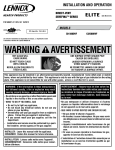
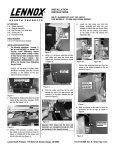
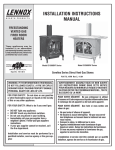
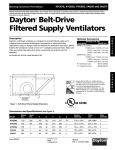


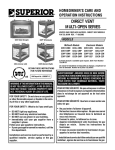
![ifCalibSTD取扱説明書[PDF:549.2KB]](http://vs1.manualzilla.com/store/data/006720962_2-f6f093a08a8e1adf50f2443be8c61b6f-150x150.png)

